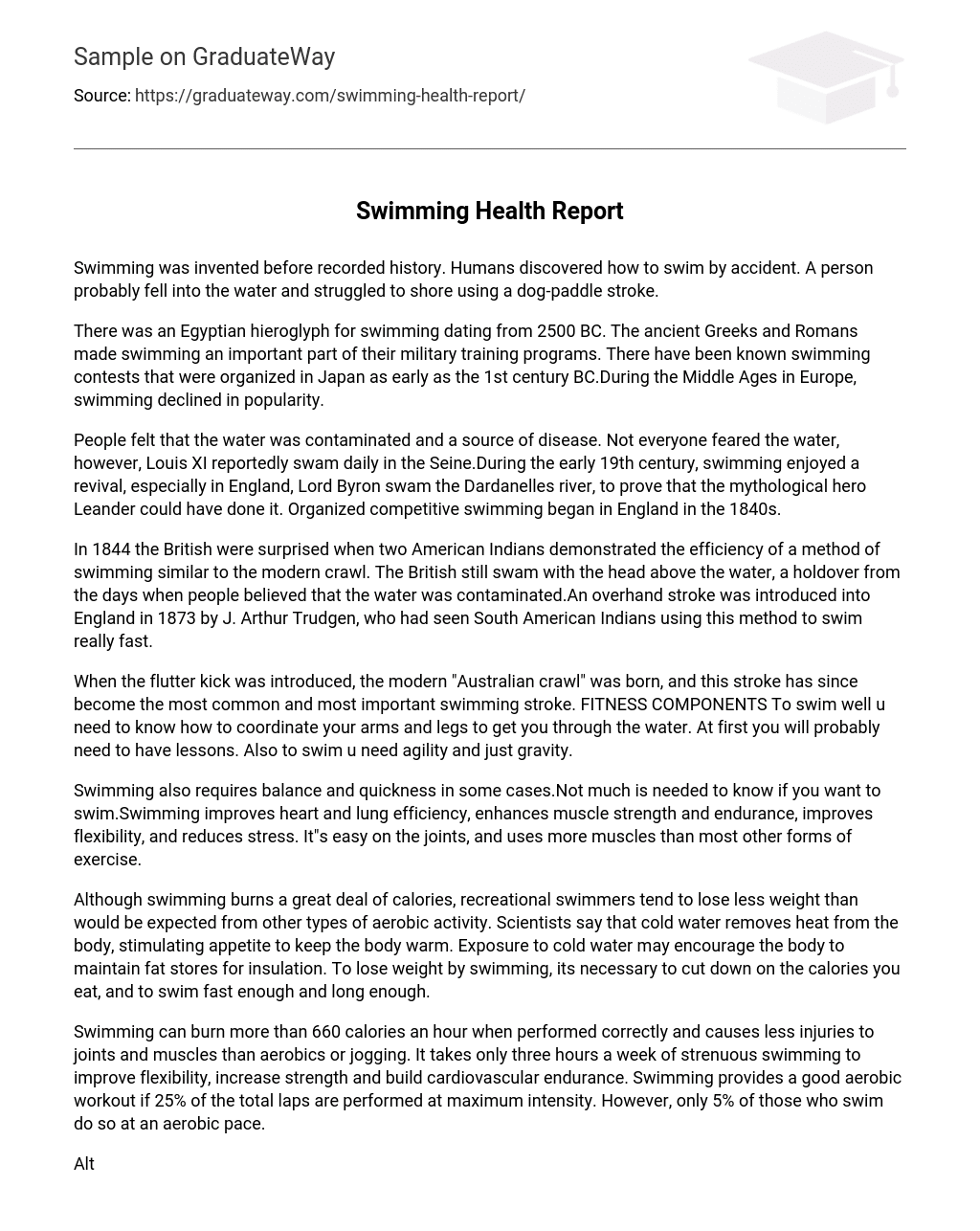Swimming is believed to have originated before written records, when humans discovered the skill by accident. It is probable that someone unintentionally entered the water and successfully reached the shore using a dog-paddle stroke.
In 2500 BC, an Egyptian hieroglyph for swimming was created. The ancient Greeks and Romans incorporated swimming into their military training regimens. As early as the 1st century BC, Japan organized swimming competitions. In Europe during the Middle Ages, swimming saw a decrease in popularity.
Despite concerns about contamination and disease, some individuals, like Louis XI, were not afraid to swim in the Seine. The popularity of swimming had a resurgence in the early 19th century, particularly in England, with Lord Byron even attempting to swim the Dardanelles river to replicate the feat of the mythological hero Leander. Competitive swimming competitions were first organized in England during the 1840s.
In 1844, two American Indians astounded the British by showcasing the effectiveness of a swimming technique resembling the contemporary crawl. The British, who still swam with their heads above water due to a lingering belief in water contamination, were taken aback. In 1873, J. Arthur Trudgen introduced the overhand stroke to England after witnessing South American Indians employing the technique for significant speed in swimming.
The introduction of the flutter kick led to the development of the modern “Australian crawl” stroke, which has become the most popular and significant swimming technique. To swim effectively, it is important to coordinate your arms and legs while in water. Taking lessons may be necessary initially for proper swimming technique. Moreover, swimming requires agility and utilizes gravity as a force.
Swimming requires balance and quickness. It doesn’t demand much knowledge. It improves heart and lung efficiency, muscle strength and endurance, flexibility, and reduces stress. It is gentle on the joints and engages more muscles than most other exercises.
Despite the fact that swimming is a calorie-burning activity, individuals engaging in recreational swimming tend to experience less weight loss compared to other aerobic exercises. According to scientists, cold water reduces body heat and triggers hunger cravings to maintain warmth. The exposure to cold water may also promote the preservation of fat reserves for insulation. To achieve weight loss through swimming, it is essential to reduce caloric intake while maintaining a sufficiently fast and prolonged swimming session.
When done correctly, swimming can burn more than 660 calories per hour and is less harsh on the body’s joints and muscles compared to aerobics or jogging. By engaging in vigorous swimming for three hours each week, individuals can enhance their flexibility, strength, and cardiovascular endurance. To optimize swimming as an aerobic workout, it is suggested to swim at maximum intensity for 25% of all laps swum. However, only a small fraction (5%) of swimmers actually maintain this aerobic pace.
Research has found that swimming, although it offers aerobic benefits, does not lead to as much body fat reduction as jogging. Swimming appears to influence the body’s energy utilization by relying more on carbohydrates rather than body fat. This could be due to swimmers needing to retain more body fat for insulation and regulating temperature. Nevertheless, swimming has the advantage of involving both the upper and lower body unlike jogging.
It is important to comprehend and attain expertise in the fundamental aspect of your sport. In the United States, over 50% of people lack swimming abilities, resulting in 5,200 drowning fatalities in 1990. Among children under 5 years old, drowning is the fourth most prevalent cause of accidental deaths. It should be acknowledged that the actual count of drowning cases may be higher as deaths occurring post-resuscitation or during hospitalization are frequently not linked to the initial incident.
Mastering the skill of swimming is essential for life-saving purposes. It should be emphasized that swimming is not an innate ability and cannot be quickly perfected. Insufficient guidance can lead to swimmers experiencing fatigue even after completing only half a lap. The main challenge faced by many swimmers lies in their inadequate breathing technique, which unnecessarily drains their energy.
Coordinating breathing with proper head rotation is crucial for achieving proficiency in swimming. Learning this skill requires proper instruction, as it is a vital component of swimming well. WHAT SETS YOUR SPORT APART FROM OTHERS? One distinctive aspect of swimming is the exhilarating experience of racing in water, wherein one dives off blocks and strives to swim as fast as possible using various styles and distances. NAME ONE POSITIVE ROLE MODEL IN YOUR SPORT.
Mark Spitz is a renowned swimmer who achieved an exceptional feat by winning seven gold medals at the 1972 Olympic Games. His dominance at that single Olympics was unprecedented and unmatched by any other athlete in any event. Specifically, in 1972, he emerged victorious in the 100- and 200-meter freestyle and butterfly events, and he was also a vital part of the winning teams for the 4 X 100- and 4 X 200-meter freestyle relays, as well as the 4 X 100-meter medley relay. Additionally, Spitz established an astonishing 32 world records and 38 U.S. records during his swimming career.
S. held numerous swimming records during his career, making him a significant role model for aspiring young swimmers.





